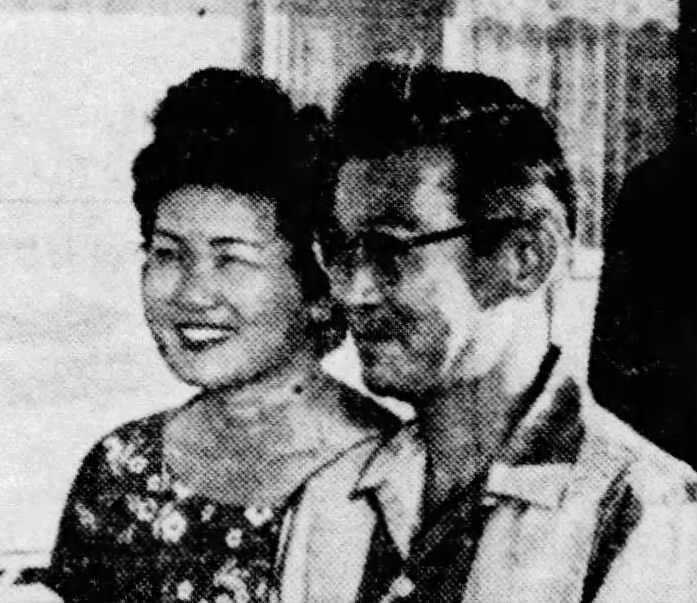
Tadashi Ayabe
Private First Class
442nd Regimental Combat Team
Antitank Company
Tadashi Ayabe was born on October 10, 1922, in Lawai, Kalaheo, Kauai, Territory of Hawaii. He was one of five sons and two daughters of Shohachi and Kiku (Nagano) Ayabe. His parents emigrated from the town of Ukiha, Fukuoka Prefecture, Japan, in 1907 and 1913, respectively. Shohachi arrived in Kauai and worked for the Kekaha Sugar Company as a carpenter. He returned to Japan in 1913 and married Kiku. They returned to Kauai, arriving in Honolulu on the Manchuria Maru on June 9, 1913.
Tadashi graduated from Kalaheo Intermediate and Vocational School in 1938 with a degree in Vocational Agriculture. By 1940, Tadashi was a 17-year-old apprentice carpenter living with the owner of a carpentry shop, Shimakichi Kumagae, on Martha Street in Honolulu.
He signed his World War II Draft Registration card at the Hanapepe Armory on Kauai on June 30, 1942. His point-of-contact was his father, Shohachi Ayabe; he was 5’5” tall and weighed 130 pounds. He lived on Kalaheo Pineapple Company land; and was employed by the U.S. Army Corps of Engineers, 4th Field Area, at Waimea.
Tadashi Ayabe enlisted in the U.S. Army on March 12, 1943. The record says that he had one year of high school and his civilian occupation was “Unskilled occupations in canning and preserving of food.” He was sent to Boom Town, the “tent city” at Schofield Barracks, with the other recruits. They were given a farewell aloha ceremony by the community on March 28 at Iolani Palace. On April 4, the new soldiers left on the S.S. Lurline for San Francisco enroute to Camp Shelby, Mississippi.
After basic training, Tadashi was assigned to the Antitank Company. After a year of additional training, the 442nd left Camp Shelby for Camp Patrick Henry, Virginia, on April 22, 1944. They shipped out to the Mediterranean Theater of Operations in a large convoy of troop ships on May 2 and arrived in Naples, Italy, on May 28.
Ayabe fought in the Rome-Arno Campaign, entering combat on June 26, 1944, near Suvereto. On July 14, the Antitank Company was pulled out of the battle line and sent to bivouac near Lido de Roma. The Company was attached to the First Airborne Task Force and their mission was to support the 517th Parachute Infantry Regiment in the invasion of southern France. After unit training for the mission, they took to the air in towed gliders on August 15. The Antitank Company was flown in 44 gliders. The platoons were split up to support different elements of the 517th. They were engaged in combat until October 21. This was an operation in the Southern France Campaign. On October 24, they rejoined the 442nd RCT for the battles in the Rhineland-Vosges Campaign, 500 miles north.
The Regiment’s first objective was to liberate the important road junction of Bruyères in the Vosges Mountains. The intense battles to liberate Bruyères and neighboring Biffontaine lasted nine days, October 16-24.
Tadashi was wounded in the battle to take Bruyères. He was admitted in November to a U.S. Army hospital as a battle casualty, injured in the line of duty. The primary diagnosis was artillery shell wound to his femur shaft and the secondary diagnosis was pneumonia. He was released the following May, having lost his leg. Ayabe was on a list of Hawaii soldier casualties for the European theater of operations printed in the Honolulu Advertiser on January 24, 1944. His address was given as Kauai Pineapple Company, Kalaheo, Kauai.
He was among 17 hospital cases, and 1,900 returning veterans (some of whom were 442nd), who arrived at Pier 40-A in Honolulu on the U.S. Army Transport ship USAT Marine Wolf on April 30, 1946.
For his military service, Private First Class Tadashi Ayabe was awarded the Bronze Star Medal, Purple Heart Medal, Good Conduct Medal, American Campaign Medal, American Campaign Medal, European-African-Middle Eastern Campaign Medal with three bronze stars and one bronze service arrowhead, World War II Victory Medal, Combat Infantryman Badge, and Glider Badge. He was awarded the Congressional Gold Medal on October 5, 2010, along with the other members of the 100th/442nd Regimental Combat Team. This is the highest Congressional Civilian Medal.

After the war, Tadashi married Alice Akiko Kawakami on February 15, 1947, in Lawai. They moved to Honolulu where he was employed as a clerk by the U.S. Army at Fort Shafter. At a dance sponsored by the Disabled American Veterans (DAV) at the Honolulu Armory on September 6, 1947, he was named as one of ten 442nd veterans who had lost a leg in the war and who participated in a jitterbug exhibition.
Right: Tadashi and Alice receiving the final loan papers for their house at 955 Leomele Street in January 1961
Ayabe was listed in a Honolulu Advertiser article printed on July 12, 1958, as one of five handicapped men employed in the maintenance shop at Fort Shafter. He was a member of the Leeward Chapter, Disabled American Veterans (DAV). In the Honolulu Advertiser edition of October 17, 1961, it was reported that he received an award for a suggestion that saved the Federal Government $2,110 a year. He was employed at Fort Shafter as a motion picture sound transmission repairman and his suggestion recommended modifications to the front lens of a camera. He was awarded a check for $80 and a certificate.
As of this writing, October 2021, Tadashi Ayabe lives in Hawaii.
Tadashi’s brother Henry Keiso Ayabe served in the U.S. Army Air Corps in World War II.
Researched and written by the Sons & Daughters of the 442nd Regimental Combat Team in 2020, and updated in 2021.
